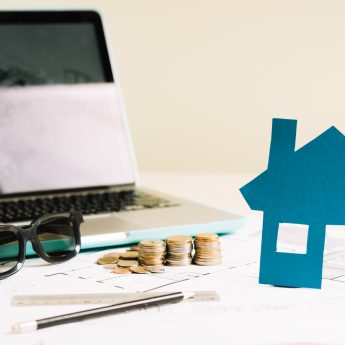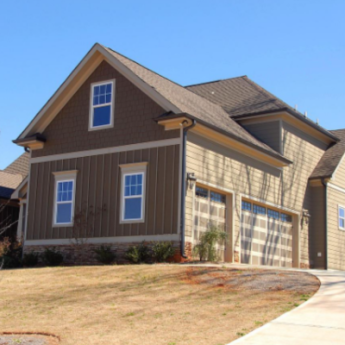Dream Home: Battling With Environmental Water Damage

For most people, becoming a homeowner represents the realization of a lifelong dream. However, that dream can quickly transform into a nightmare in the face of environmental water damage. Homes across the nation suffer severe destruction from water issues year after year. Now, explore the problem more deeply to understand how to effectively combat it.
What Defines Water Damage?
Environmental water damage refers to any loss or detriment caused by water intruding where it enables microbial growth or other harmful processes like wood rotting, mold formation, rusting of steel, warping of composite wood materials, etc. The damage can stem from clean water sources like broken pipes or rainwater or contaminated sources like flooded sewage systems.
Importance Of Preventative Measures
Rather than scrambling to fund expensive restorations after the fact, investing in preventative measures costs a fraction of the price. Prevention starts with performing routine checks for potential leakage risks or drainage issues. Maintaining home plumbing infrastructure properly and sealing windows/doors against moisture intrusion also proves critical.
Learn about environmental impact – left unchecked, water damage degrades indoor air quality through mold growth and increases the carbon footprint through remediation activities. In other words, prevention defends both the home and the planet.
Tracking Down The Culprits
Pinpointing root causes enables more targeted prevention. The main culprits typically involve leaks from roofs, pipes or gutters, groundwater seepage, rainwater infiltration or catastrophic incidents like floods. Homeowners remain powerless against natural disasters but can safeguard against other issues through proactive measures like leak audits, insulation improvements and installation of quality building materials.
Early Warning Signs
Telltale signs of water damage include moisture or condensation buildup around windows and walls, visible mold/mildew growth, and a pervasive musty stench. Additionally, otherwise unexplained wall/ceiling discoloration indicates a potential issue. If noticing any suspicious symptoms, take immediate action to halt escalation of the problem. The quicker water damage gets detected and treated, the better the chances of mitigating further harm.
Finding The Hidden Threats
Sometimes damage hides out of sight, concealed behind walls or under floors. Warning signs pointing to hidden threats include excessive localized humidity, greater than expected water usage signaling possible leakage as well as softened or peeling wall areas.
Since hidden damages often escape early detection, they necessitate professional intervention when finally discovered. Always enlist qualified experts like IICRC-certified specialists if major underlying issues are suspected.
Evaluating Severity
While all water damage requires a prompt response, severe cases demand more extreme measures. When evaluating severity, consider factors like the water’s level of contamination, the total square footage impacted and which home structures suffered damage. For accurate analysis, homeowners uncertain of the appropriate response should consult water damage restoration professionals. Delaying urgent repairs risks exponentially amplifying both damage and expenses.
Consequences Of Inaction
Much like mold and mildew, the problems with water damage grow progressively worse if left alone. Neglecting damages threatens structural integrity through erosion, enables mold overgrowth and noxious odors pervading living spaces and reduces the chances of salvaging affected personal belongings over time. Additionally, putting off essential repairs drives up long-term restoration costs.
Structural Impacts
If untreated, water damage wields devastating effects on building integrity. Prolonged exposure deteriorates critical load-bearing structures like foundations, walls and roofs.
For example, excessive moisture rots wooden components and dissolves drywall, producing sagging ceilings. Ultimately, deteriorating structural stability endangers resident safety.
Health Risks
Damp conditions similarly foster environments hospitable to various health hazards. Mold growth releases spores linked to allergic reactions, asthma flare-ups, and other respiratory issues while also nurturing dust mites notorious for triggering allergic responses. Under extreme cases, uncontrolled moisture enables dangerous viral and bacterial propagation.
Treatment Overview
Customized treatment plans match response efforts to the damage extent. Minor issues may only require excess water removal and drying/dehumidifying impacted areas whereas more severe cases could demand sanitization, mold remediation, and structural repairs. While homeowners can self-treat simpler damages, water restoration professionals provide indispensable assistance for extensive destruction.
Choosing The Right Pros
Vetting credentials constitute a crucial component when selecting contractors. Reputable professionals boast certifications from bodies like the IICRC and can furnish client testimonials and detailed methodological summaries. Additionally, be wary of lowball quotes that seem too good to be true – unclear pricing often hides problematic hidden fees.
Drying Out Your Home
Swiftly drying out the home prevents secondary damage like mold intrusions. Mechanical air movers first circulate air for rapid drying followed by dehumidifiers extracting ambient moisture from the environment and building materials. Finally, clean all visible mold and mildew from surfaces using appropriate detergents.
Restoring Curb Appeal & Property Value
Left untreated, conspicuous exterior signs of water damage like flaking paint, ugly efflorescence deposits on walls and unkempt landscaping can diminish aesthetical appeal and discourage prospective buyers. However, a full-scale restoration revitalizes home value by refreshing outer aesthetics. First impressions matter deeply in real estate. Beyond cosmetic upgrades, extensive structural improvements directly increase assessed valuations while preventing future degradation that would otherwise necessitate costly repairs down the road.
Salvaging Belongings
The viability of restoring water-logged possessions varies. While extensively submerged furniture often meets its demise, certain durable items like finished wood and metal may prove salvageable. Meanwhile, specialized document restoration techniques enable the salvaging of precious photos or vital records.
Controlling Home Humidity
Preventative measures should focus on regulating indoor humidity under 60% across all rooms. Pay special attention to naturally humid areas like basements and bathrooms. Improving home ventilation, running AC units/dehumidifiers
and installing bathroom exhaust fans represent some of the most effective techniques for maintaining safe humidity standards.
Ongoing Maintenance
Preserving home health requires ongoing diligence through regular inspection for leaks or mold intrusions and ensuring adequate air circulation and ventilation. Additionally, an annual professional assessment helps catch budding issues early.
The Water Damage Specialist
When facing extensive destruction from water issues, enlisting an IICRC-certified professional who specializes in water damage proves invaluable. The Water Damage Specialist possesses extensive hands-on remediation experience coupled with mastery of industry best practices.
Homeowners benefit from the specialist’s depth of knowledge regarding effective drying techniques, contaminant removal, structural repairs, and mold remediation procedures. Specialists also boast an arsenal of commercial-grade equipment for water extraction, purification and structural drying unattainable by ordinary homeowners.
Water Leak Detection Systems
Investing in professionally installed systems designed to automatically detect water leaks and pipe ruptures helps achieve round-the-clock protection. Water sensor alarms trigger upon detecting liquid intrusions and immediately shut off main water lines.
This rapid response minimizes flooding severity before homeowners arrive to directly address the situation. Some sensor systems also facilitate remote condition monitoring via smartphone, providing alerts even when away from home. While not infallible, leak detection technology grants valuable peace of mind against sudden catastrophic pipe failures.
Impacts On Home Sales
Attempting to sell a house concealing evidence of water damage often proves an exercise in futility. Few buyers feel comfortable inheriting pre-existing infrastructure issues clouded in uncertainty. Contamination concerns also deter potential buyers once made aware of past water intrusions or visible indications signaling mold growth.
Instead of hassling with repairs after moving in, most wish to enjoy a seamless transition into an idyllic, move-in-ready dream home. Be upfront about all past damages and repairs to avoid accusations of concealing vital information.
To Summarize
Battling the menace of water damage comes down to understanding, prevention and responsiveness. While potentially devastating if dismissed, homeowners can prevail through timely action and education. Furthermore, embracing eco-conscious living minimizes the risks of water damage while maximizing whole home health. Keep the dream of homeownership alive through vigilance.
Read Also:
















Leave A Reply